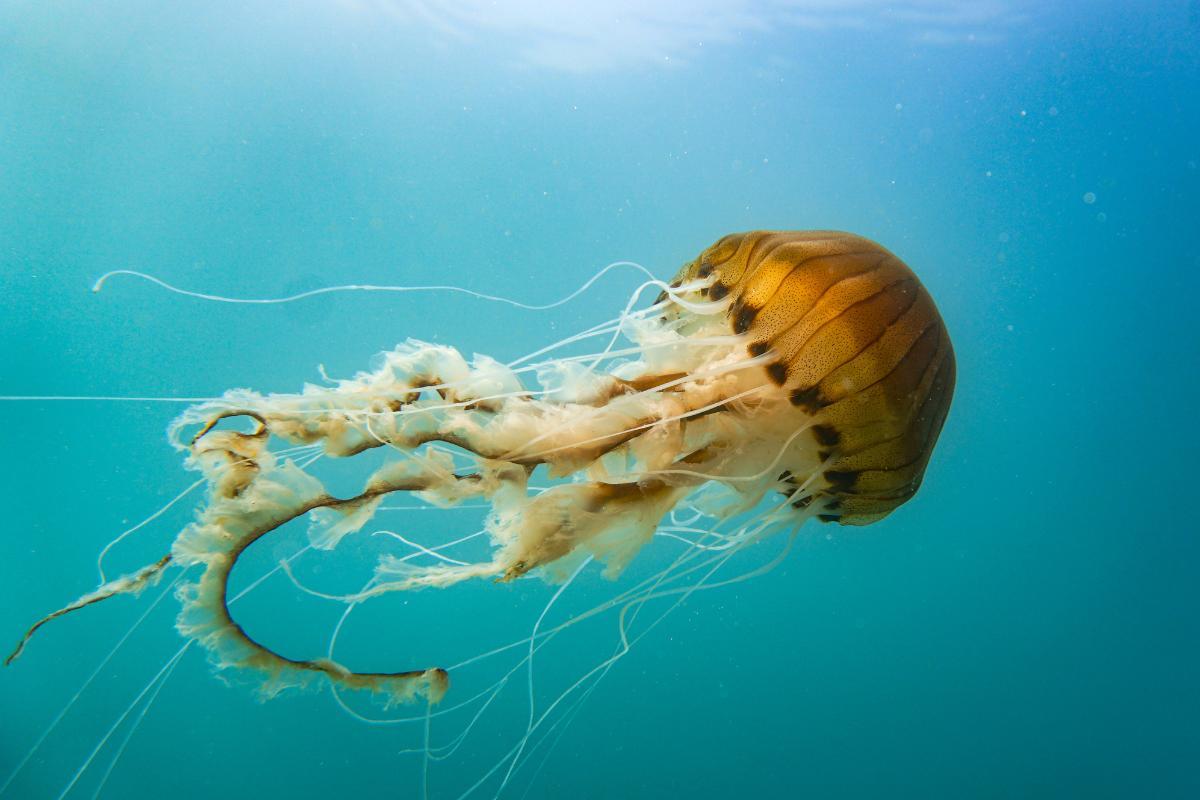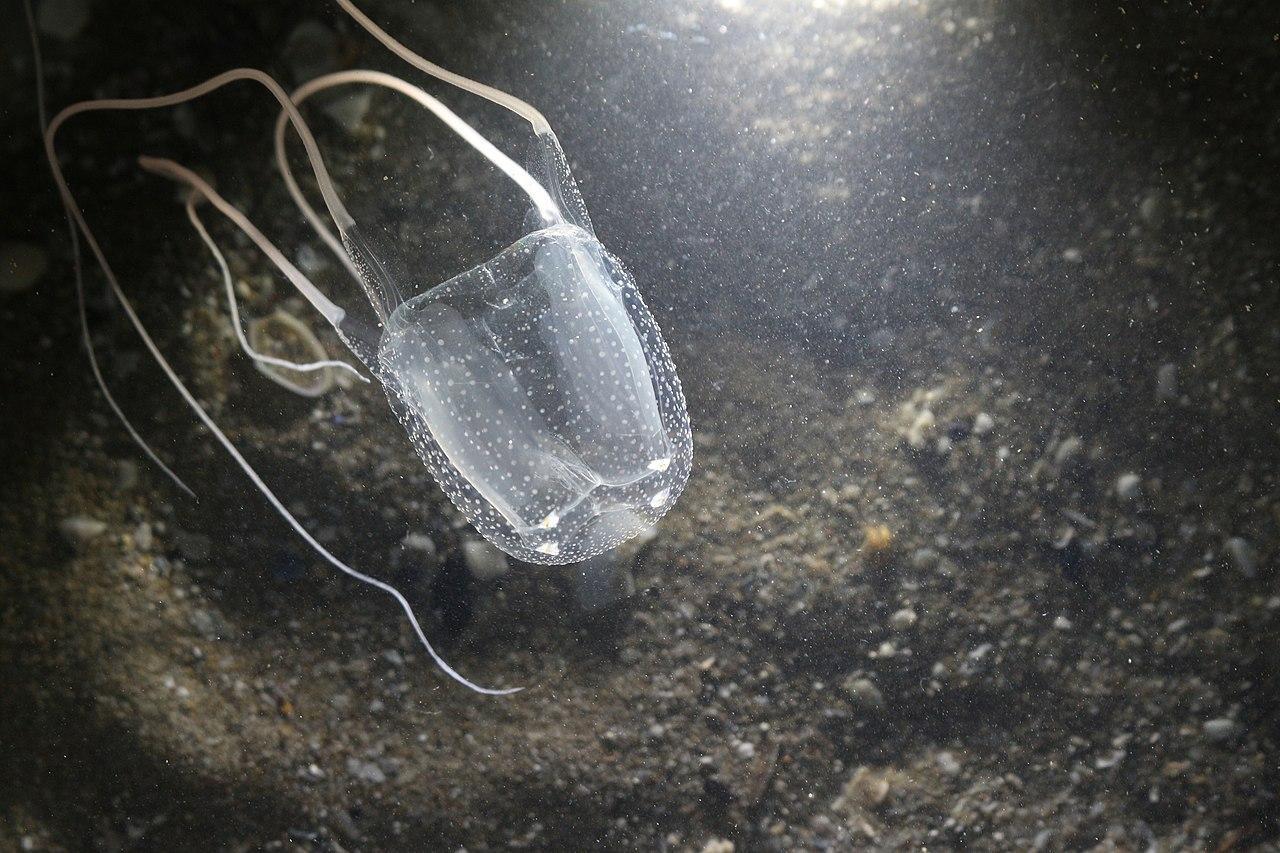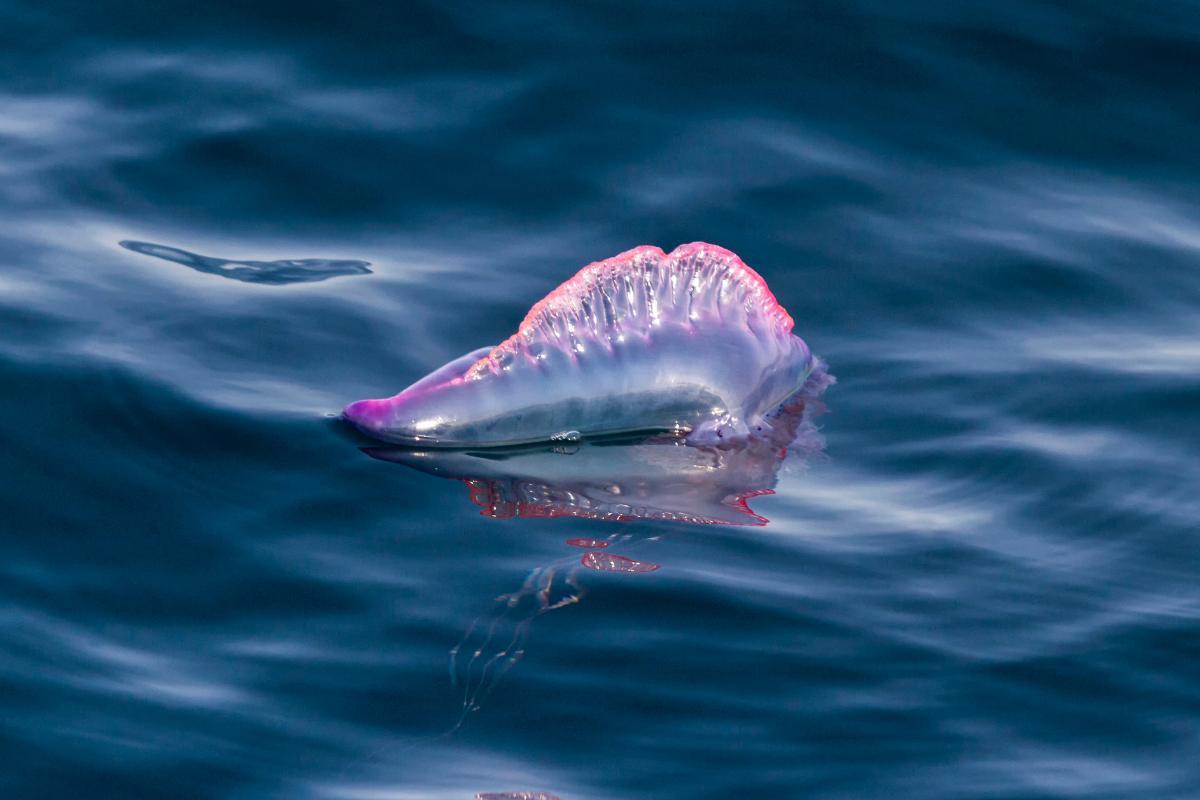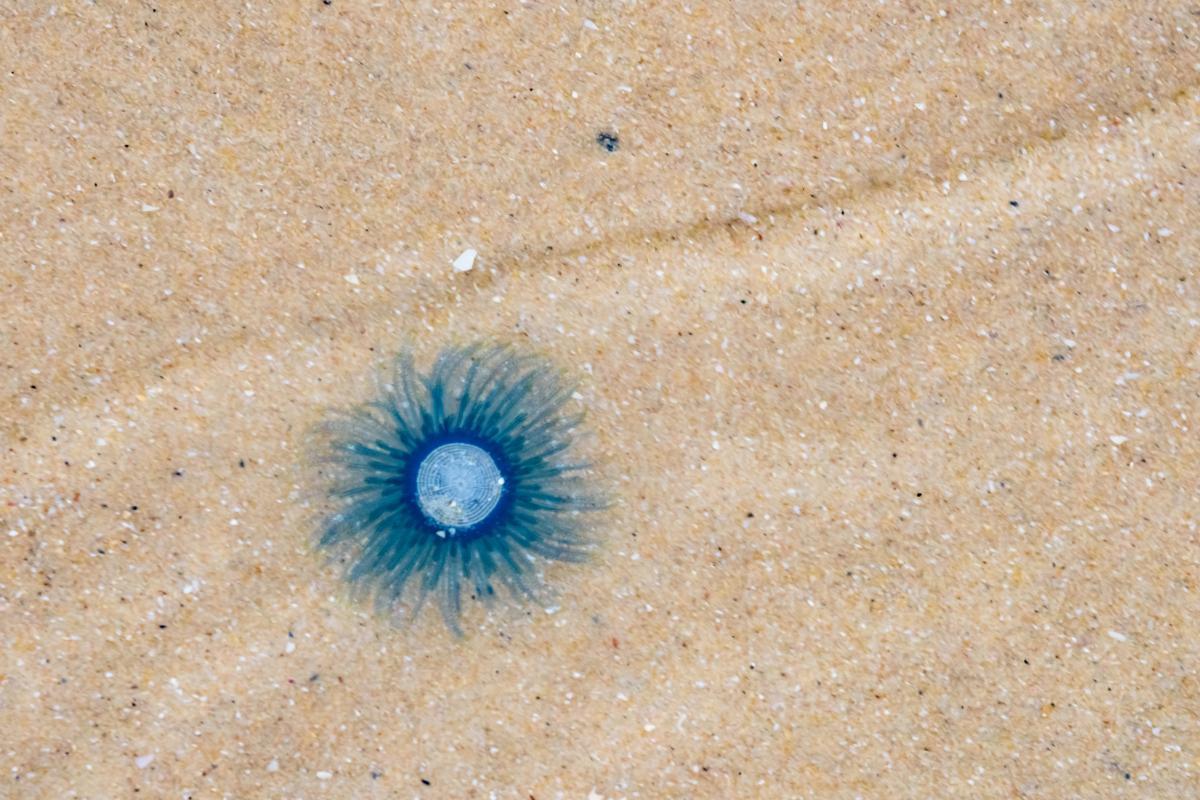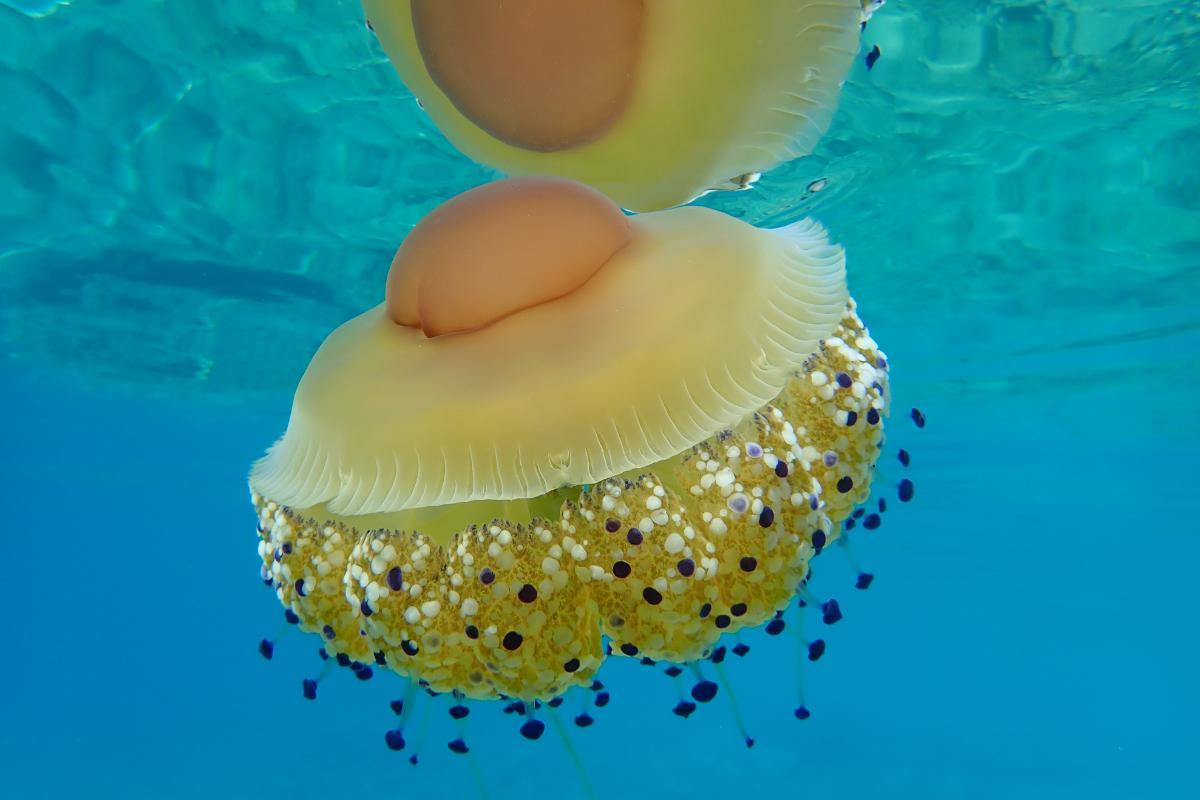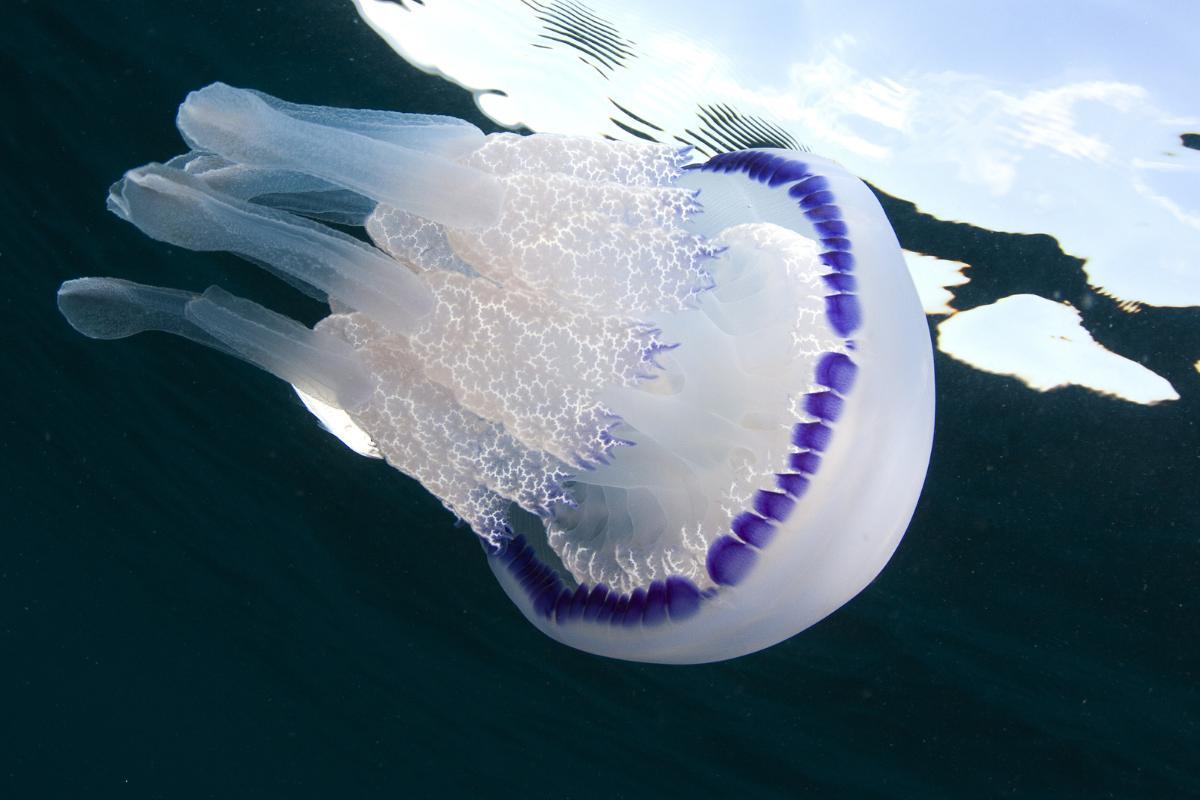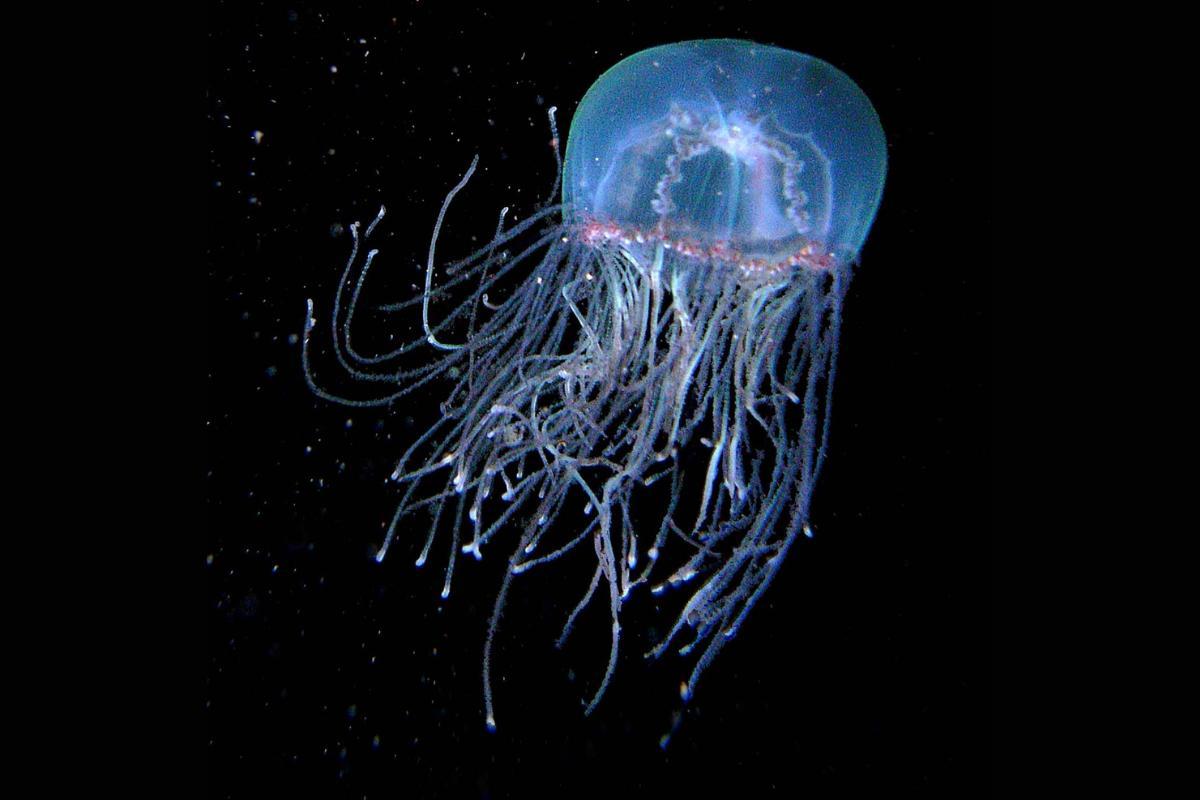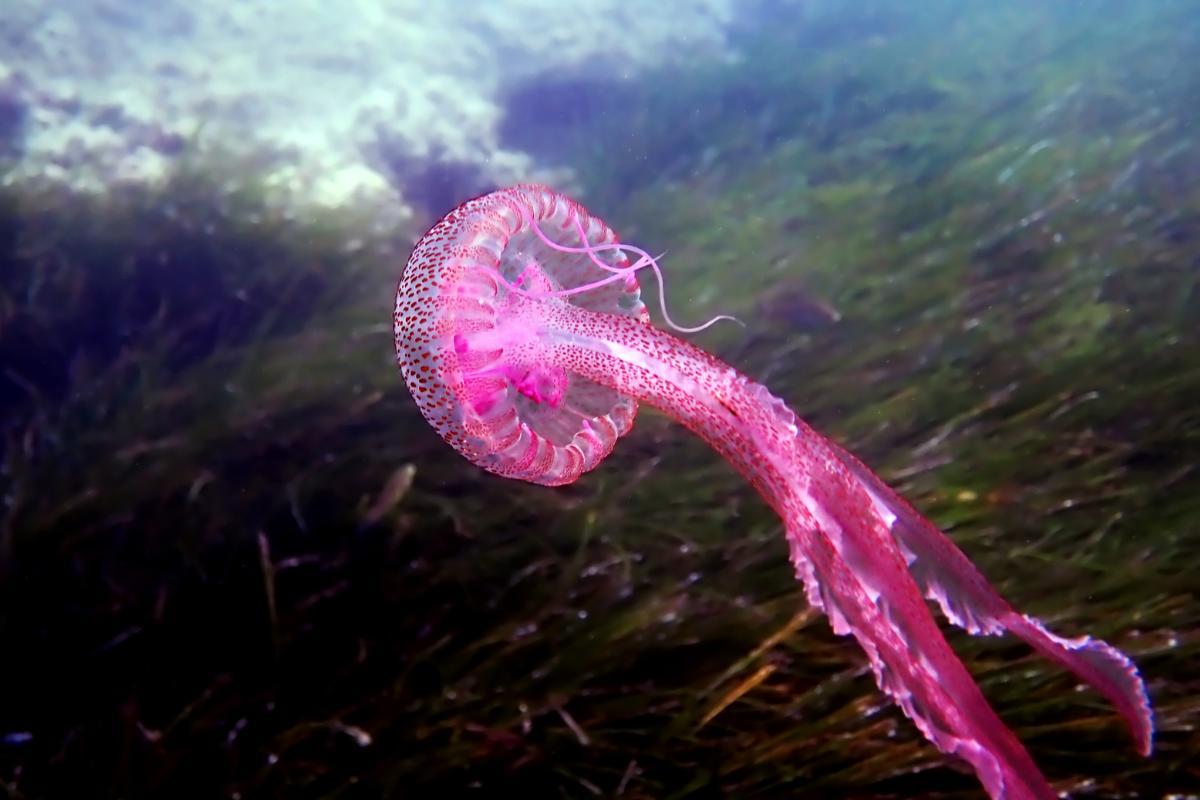Mediterranean Jellyfish Species


Mediterranean Jellyfish include species such as the compass Jellyfish (Chrysaora hysoscella), common jellyfish (Aurelia aurita), warty sea wasp (Carybdea marsupialis), Portuguese man o' war (Physalia physalis), blue button (Porpita porpita), Mediterranean jellyfish (Cotylorhiza tuberculata), barrel jellyfish (Rhizostoma pulmo), cigar jellyfish (Olindias phosphorica) and the mauve stinger (Pelagia noctiluca).
Jellyfish are associated with warm waters. The sightings of jellyfish in the Mediterranean tend to occur during the summer months. This is also because jellyfish will emerge from their juvenile polyp stage only when the waters are sufficiently warm. Unfortunately, this is also the season which sees most bathers enter the water. Not all jellyfish have the ability to sting, but those that do can be very painful. In this article for thedailyECO, we look at 20 Mediterranean jellyfish species. We also provide photos so you know which may sting and which may not.
- Compass jellyfish (Chrysaora hysoscella)
- Common jellyfish (Aurelia aurita)
- Warty sea wasp (Carybdea marsupialis)
- Portuguese man o' war (Physalia physalis)
- Blue button (Porpita porpita)
- Mediterranean jellyfish (Cotylorhiza tuberculata)
- Barrel jellyfish (Rhizostoma pulmo)
- Cigar jellyfish (Olindias phosphorica)
- Mauve stinger (Pelagia noctiluca)
- Other Mediterranean jellyfish species
Compass jellyfish (Chrysaora hysoscella)
This jellyfish is characterized by its umbrella shape which has a clear bell (i.e. their main body) with a radiated brown coloration. These brown lines emanate from the center in a way which resembles the face of a compass, hence their common name. Their body can measure up to 12"/30 cm in diameter, but their tentacles can be as long as 16'/5 m.
They have oral arms which are longer and denser than their tentacles. They also have frills. It is important to identify a compass jellyfish when you see one since their stings are very painful and can leave serious welts. It is usually found in deeper water, but can come closer to the coast in the summer.

Common jellyfish (Aurelia aurita)
Also called the moon jellyfish, this is one of the most well distributed jellyfish in the world. Despite this, it is not as common in the Mediterranean as it tends to be in other parts of the world. It is commonly seen close to the coasts, especially in enclosed waters. They are transparent and have a blue tint in certain lights. Their body can be as wide as 10"/25 cm. The four circles you can see in the photo below are their gonads. Although they can sting, the effect is light and not considered dangerous to humans.

Warty sea wasp (Carybdea marsupialis)
The warty sea wasp is a type of box jellyfish, a group of cnidarians which have a square bell. It is the only type of Mediterranean box jellyfish. They are very small with a diameter that does not usually exceed 1"/3 cm. The tentacles are long in comparison to the body. They have four which are located at the corners of their box-shaped bell.
The sting of these box jellyfish can be dangerous, causing rashes and systemic problems in some individuals. However, some people can be stung and not even notice. These Mediterranean jellyfish usually swim at depths of 7'/20 m, but they are difficult to see due to their small size.

Portuguese man o' war (Physalia physalis)
Although they are cnidarians, the Portuguese man o' war is a siphonophore and not a true jellyfish. They bear many similarities in morphology and behavior. They are a colonial animal, meaning they live in large groups known as colonies.
Also known as the man-o-war, this animal is part of the neuston, i.e. the animal life living at the surface of the sea water. They float thanks to an upper body part which can fill with air. It has pink folds on top which act like a sail for direction. Their tentacles can be up to 7'/20 m long and hang under their body structure. These have neurotoxins which are used to catch prey, but which are do dangerous to humans, they can be fatal.

Blue button (Porpita porpita)
Included in our list of Mediterranean jellyfish species, the blue button is another siphonophore. They are characterized by having a flattened, disc-shaped radial float from which blue-colored tentacles extend, as shown in the photo below.
Although it appears like one organism, it is actually a colony of smaller hydroid organs. The top circular part is the float of the organism which allows them to move upward through the water. The tentacles are actually juvenile polyps which form a colony. They have nematocysts that give a sensation of itching, but it is very light, causing a simple urticaria (hives) that is not usually dangerous for humans.

Mediterranean jellyfish (Cotylorhiza tuberculata)
This Mediterranean jellyfish species is so much associated with the region that it is named after it. The flattened bell has an internal structure which is orange in color. When contrasted with the rest of the white bell, it makes it look like a fried egg. They are sometimes known as a fried egg jellyfish for this reason. They have thick oral arms which have purple and white dots on them. They are found in open waters and can have populations so large, they disrupt recreational activities in the Mediterranean.

Barrel jellyfish (Rhizostoma pulmo)
It is a very large jellyfish with a bell that can be as much as 3'/1 m. It is mainly white with a blue lobed margin. The oral arms are thick and joined together at the base. They are found in open and coastal waters, especially in warm seasons. They cause slight irritation on contact. However, they also release substances into the water that cause itching while you are swimming.

Cigar jellyfish (Olindias phosphorica)
In recent years their populations have increased due to climate change and the increase in temperature in the Mediterranean Sea. The bell is the shape of an inverted bowl which reaches about 3"/8 cm in diameter. From it hang thin tentacles which are blue. It has bioluminescent capacity so it is more visible at night. It is distributed mainly along the coasts.

Mauve stinger (Pelagia noctiluca)
Also known as the purple stinger or night-light jellyfish, this Mediterranean jellyfish species lives mainly in open waters, but can also reach the coast. They form dense swarms and can become a plague, especially if they wash up onto the beach. They are transparent in color with a pink interior.
Mauve stingers have very thick oral arms, as well as thin and long tentacles that can measure up to 6.5'/20 m. They can cause considerable large wounds and slow recovery, causing a greater risk of secondary bacterial infection. As seen in the photo below, they have markings on the outer tissue that are actually concentrations of stinging cnidocytes. Unlike most other types of Mediterranean jellyfish, this means their bell can also sting humans.

Other Mediterranean jellyfish species
These are not all of the Mediterranean jellyfish species that exist, but you can see some more below (not all of which have a common name):
- Many-ribbed jellyfish (Aequorea forskalea)
- Sea raft (Velella velella)
- Nomad jellyfish (Rhopilema nomadica)
- Sea walnut (Mnemiopsis leidyi)
- Clinging jellyfish (Gonionemus vertens)
- Upside-down jellyfish (Cassiopea andromeda)
- Discomedusa lobata
- Rhizostoma luteum
- Leucothea multicornis
- Pandea conica
- Beroe ovata
The Mediterranean Sea is a large aquatic ecosystem which is home to these different types of jellyfish. Learn more about the flora and fauna of other geographical areas with our guide to the different types of ecosystems.

If you want to read similar articles to Mediterranean Jellyfish Species, we recommend you visit our Wild animals category.
- Ministry for the Ecological Transition and the Demographic Challenge. (n.d.). Most frequent species. Retrieved from: https://www.miteco.gob.es/es/costas/campanas/campana-medusas/tipos_medusas.aspx
- Bergillos, F., & Rivas, M. (2013) Clinical Toxinology. Injuries from stings and animal bites. Volume I. Spain: Bubok Publishing.
- Marambio, M., López-Castillo, L., Fuentes, V., & Gili, J. M. (2018). Identification and treatment guide for jellyfish stings and other gelatinous organisms on the Spanish Mediterranean coast. Institute of Sciences of the Sea.






